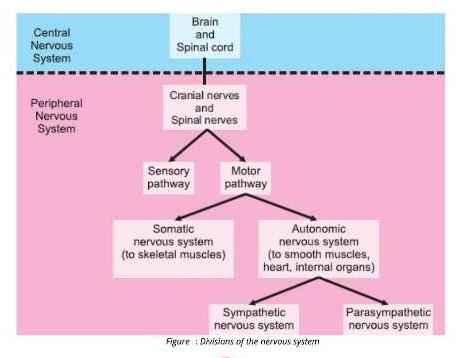Q.6 Explain Peripheral Nervous System (PNS) in detail.
Answer:
PERIPHERAL NERVOUS SYSTEM (PNS) Components of PNS:
The PNS is composed of nerves and ganglia.
Ganglia
Ganglia are the clusters of neuron cell bodies outside the nervous system.
Number of cranial and spinal nerves.
Humans have 12 pairs of cranial nerves and 31 pairs of spinal nerves.”
Types of nerves
Some cranial nerves are sensory, some are motor and some are mixed. On the other hand, all spinal nerves are mixed nerves.
Pathways in PNS formed by Nerves
The cranial and spinal nerves make two pathways: Sensory pathway which conducts impulses from receptors to CNS.
Motor pathway which conducts impulses from CNS to effectors. Systems of Motor pathway:
Motor Pathway makes two systems:
1. Somatic Nervous system
It is responsible for the conscious and voluntary actions. It includes all of the motor neurons that conduct impulses from CNS to skeletal muscles.
2. Autonomic Nervous System
It is responsible for the activities, which are not under conscious control. It consists of motor neurons that send impulses to cardiac muscles, smooth muscle and glands. Types of autonomic Nervous system .
Autonomic nervous system comprises of sympathetic system and parasympathetic system.
(i) Sympathetic nervous system
This system prepares body to deal with emergency situations. This is often called the fight or flight responses. During an emergency situation, this system takes necessary actions. For example; it dilates pupils, accelerates heartbeat, increases breathing rate and inhibits digestion.
(ii) Parasympathetic nervous system
When stress ends, the parasympathetic nervous system takes action and normalizes all the functions. It causes pupil to contract, promotes digestion, and slows the rate of heartbeat and breathing rate.
